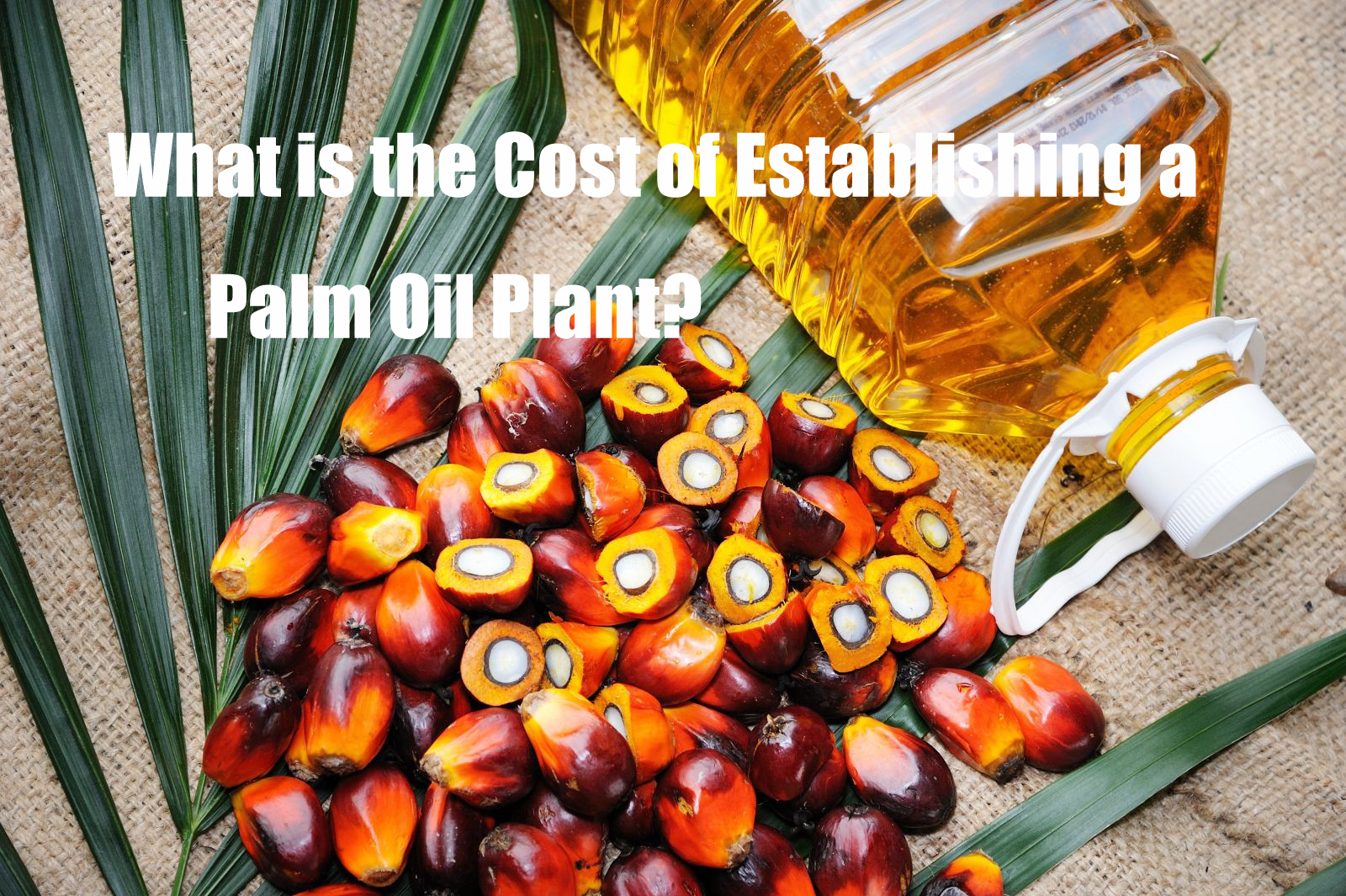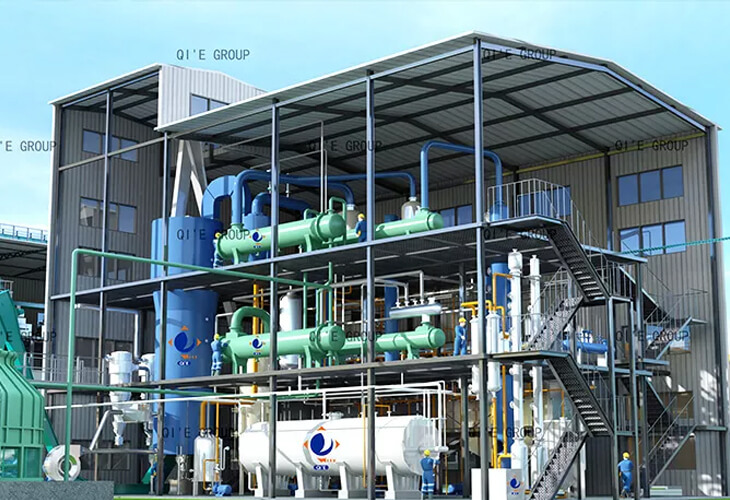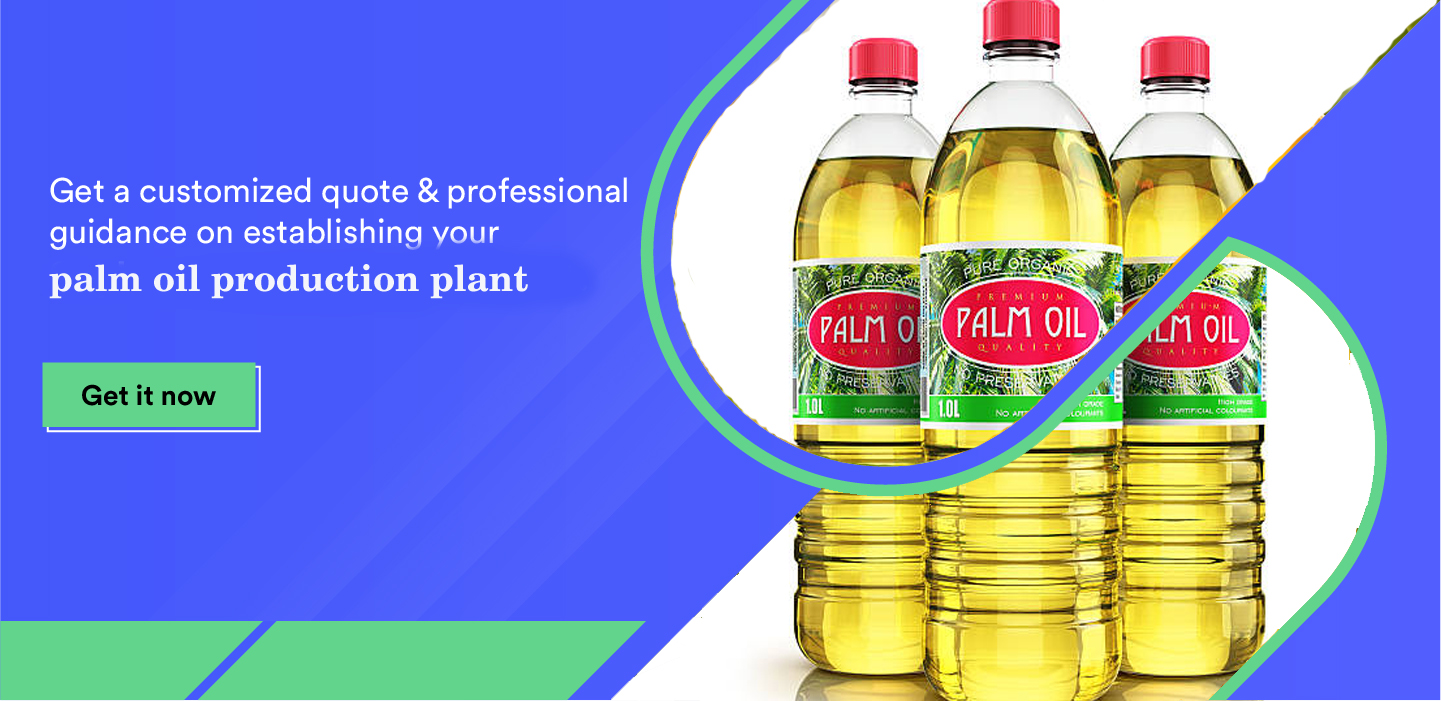Palm oil is among the most commonly used edible oils in the world and is valued for its versatile use as a cooking ingredient in food manufacturing.

However, the process of extracting this commodity is very tedious and expensive. If you are considering entering this industry or expanding your existing setup, knowing the palm oil plant cost is crucial for making the right decisions.
Why Costs Matter in Palm Oil Mill Plant?
Many factors can affect a palm oil factory’s project investment and operation cost. These factors vary from the size and location of the plant to the type of technology and equipment used. Investors and manufacturers would find it useful to understand these cost drivers and properly plan to achieve the best possible investment returns.
Location
- Land costs: Vary drastically by region (e.g., prime agricultural areas near plantations vs. remote locations). Proximity to oil palm estates reduces transportation costs for fresh fruit bunches (FFBs) but may mean higher land prices.
- Infrastructure access: Costs rise if the site lacks existing roads, electricity grids, or water sources (e.g., building private power generators or boreholes adds to Capex).
- Regulatory requirements: Some regions mandate environmental buffers, waste treatment zones, or compliance with sustainability standards (e.g., RSPO), increasing land or construction costs.
- Factory Scale and Capacity
- Processing capacity (tonnes of FFBs per day, or TPD): Larger mills (e.g., 60 TPD vs. 600 TPD) require more machinery, bigger storage facilities, and larger buildings. While economies of scale can reduce per-unit Capex, upfront costs for high-capacity equipment (e.g., larger sterilizers, presses, or refining lines) are significantly higher.
- Product scope: A mill focused solely on crude palm oil (CPO) has lower Capex than one adding refining (RBD oil) or fractionation (olein/stearin) lines, which require specialized equipment (bleaching tanks, deodorizers, fractionation columns).
- Machinery and Technology
- Equipment quality: New, high-efficiency machinery (e.g., automated sterilizers, continuous presses, or energy-saving boilers) costs more upfront but reduces long-term Opex. Used or low-quality equipment may lower Capex but increases maintenance costs later.
- Automation: Adopting IoT sensors, AI-driven process controls, or robotic sorting reduces labor dependency but adds to Capex for software and hardware.
- Local vs. imported machinery: Imported equipment (e.g., from Europe or Asia) often has higher costs due to shipping, tariffs, and installation, while local alternatives may be cheaper but less reliable.
- Infrastructure and Construction
- Civil works: Costs for buildings (sterilization halls, pressing rooms, storage tanks), concrete foundations, and waste treatment facilities (e.g., effluent ponds for palm oil mill effluent, or POME) depend on local labor and material prices (steel, cement).
- Utilities setup: Installing steam boilers, water treatment plants, or biomass energy systems (to use palm kernel shells as fuel) adds to Capex but can lower future energy costs.
- Permits, Licenses, and Compliance
- Regulatory fees: Costs for environmental impact assessments (EIAs), operating licenses, and sustainability certifications (e.g., RSPO, ISPO) vary by country. Strict regimes (e.g., Indonesia’s ISPO) may require costly audits or upgrades.
2. Factors Driving Operational Costs (Opex)
These are recurring expenses to keep the factory running daily.
- Raw Material (FFB) Costs
- FFB prices: The single largest Opex item, influenced by supply (local yields, seasonal fluctuations), demand (competition from other mills), and quality (ripeness, contamination). Smallholders may charge higher prices during shortages, squeezing margins.
- Transportation: Costs to haul FFBs from plantations to the mill (affected by distance, fuel prices, and road conditions). Spoilage during transport (if delays occur) further increases effective costs.
- Labor
- Wages: Dependent on local labor markets, skill levels (e.g., machine operators vs. unskilled workers), and regulations (minimum wage laws, overtime). Mills in regions with labor shortages face higher costs.
- Training: Ongoing costs to train workers on safety, equipment operation, or new technologies (e.g., automation systems).
- Energy and Fuel
- Steam production: Most mills use boilers (fueled by palm kernel shells, biomass, or diesel) for sterilization. Fuel price volatility (e.g., diesel) or inefficiencies in boiler operation drive up costs.
- Electricity: For machinery, lighting, and cooling. Mills off-grid rely on generators, increasing costs compared to those on stable grids.
Maintenance and Repairs
- Routine upkeep: Costs for replacing parts (e.g., press screws), lubricants, or repairing wear-and-tear on machinery. Neglect leads to unplanned downtime, which is costly (e.g., lost production during peak FFB harvests).
- Spare parts: Imported parts may have high shipping costs or long lead times, increasing inventory holding costs.
Waste Management
- POME treatment: Mandated by regulations to prevent pollution, this requires ponds, biogas plants, or aerobic treatment systems—all with ongoing operational costs (e.g., electricity for pumps, labor for monitoring).
- Solid waste: Disposal or recycling costs for empty fruit bunches (EFBs), fibers, or kernel shells (though some mills offset this by using EFBs for biomass fuel).
Transportation of Finished Products
- Moving CPO or refined oil to ports, refineries, or buyers. Costs depend on distance, fuel prices, and storage (e.g., tankers vs. drums).
Regulatory and Compliance Costs
- Taxes: Export duties, value-added tax (VAT), or carbon taxes (in regions with climate policies).
- Audits and certifications: Annual fees for maintaining sustainability certifications (e.g., RSPO) or passing regulatory inspections.
3. External and Market Factors
- Commodity Price Volatility: Fluctuations in CPO prices (driven by global demand, weather, or trade policies) affect revenue, making cost control critical to maintain margins during downturns.
- Government Policies: Subsidies (e.g., for renewable energy) can lower costs, while export restrictions or new taxes (e.g., Indonesia’s 2022 export ban) increase operational risks and costs.
- Climate and Weather: Droughts or floods reduce FFB supply, raising prices, while extreme heat can damage machinery, increasing maintenance costs.

Cost Estimates Based on Palm Oil Plant Scale
Cost estimates for palm oil plants vary significantly based on scale (processing capacity), location, technology, and product scope (e.g., crude palm oil [CPO] vs. refined products). Below is a detailed breakdown of capital expenditure (Capex) and operational expenditure (Opex) for different plant sizes, supported by industry benchmarks and case studies.<
1. Small-Scale Palm Oil Plants (60–200 TPD)
Processing Capacity: 60–200 tonnes of fresh fruit bunches (FFBs) per day.
Typical Use Case: Rural or community-owned mills, often focused on CPO production.
Capex Estimates
- Equipment: $1–3 million (40–60% of total Capex)
- Key machinery: Sterilizers, screw presses, clarifiers, and basic storage tanks.
- Local or refurbished equipment is common to reduce costs .
- Infrastructure: $0.5–1.5 million
- Includes simple steel structures, minimal wastewater treatment (e.g., ponds), and basic utilities.
- Land: $0.2–0.5 million (varies by region; e.g., $5,000–$20,000 per hectare in Southeast Asia).
- Permits and Compliance: $50,000–$200,000 (e.g., environmental impact assessments, licenses).
- Total Capex: $2–5 million (lower in regions like Indonesia, higher in Africa due to infrastructure gaps) .
Opex Estimates
- FFB Cost: $300–$400 per tonne (80–85% of Opex).
- Small mills often pay premiums for FFBs due to competition with larger players .
- Labor: $20–$30 per tonne (manual labor dominates; 5–10 workers).
- Energy: $15–$25 per tonne (diesel or biomass boilers).
- Maintenance: $10–$20 per tonne (high for older equipment).
- Total Opex: $350–$450 per tonne of FFB processed .
Processing Capacity: 200–500 TPD.
Typical Use Case: Commercial mills producing CPO for export or local refining.
Capex Estimates
- Equipment: $5–10 million (50–60% of total Capex)
- Upgraded machinery: Continuous sterilizers, centrifugal separators, and automated presses.
- Partial automation (e.g., IoT sensors for quality control) .
- Infrastructure: $2–4 million
- Concrete structures, biogas systems for POME treatment, and dedicated storage tanks.
- Land: $0.5–1.5 million (larger sites for expanded operations).
- Permits and Compliance: $200,000–$500,000 (e.g., RSPO certification adds 10–20% to costs) .
- Total Capex: $8–15 million (Southeast Asia) vs. $10–20 million (Africa/Latin America) .
Opex Estimates
- FFB Cost: $250–$350 per tonne (negotiated bulk contracts with plantations).
- Labor: $10–$15 per tonne (semi-automated processes reduce headcount).
- Energy: $10–$20 per tonne (biomass boilers with 70–80% efficiency).
- Maintenance: $8–$15 per tonne (spare parts sourced from regional suppliers).
- Total Opex: $280–$380 per tonne of FFB processed .
3. Large-Scale Palm Oil Plants (500+ TPD)
Processing Capacity: 500–2,000+ TPD.
Typical Use Case: Integrated mills with refining, fractionation, and biodiesel production.
Capex Estimates
- Equipment: $15–30 million (40–50% of total Capex)
- State-of-the-art systems: Continuous sterilization lines, membrane filtration, and automated refineries.
- Full automation (e.g., AI-driven process control) .
- Infrastructure: $8–20 million
- Dedicated power plants (using palm kernel shells), advanced POME treatment (anaerobic digesters), and rail/port access.
- Land: $2–5 million (industrial zones near ports or plantations).
- Permits and Compliance: $1–3 million (e.g., RSPO and EU sustainability certifications).
- Total Capex: $30–80 million (Southeast Asia) vs. $40–100 million (Africa/Latin America) .
Opex Estimates
- FFB Cost: $200–$300 per tonne (vertical integration with owned plantations).
- Labor: $5–$10 per tonne (highly automated; 20–50 workers for 1,000 TPD).
- Energy: $5–$15 per tonne (combined heat and power systems achieve 90% efficiency).
- Maintenance: $5–$10 per tonne (predictive maintenance using IoT sensors).
- Total Opex: $220–$320 per tonne of FFB processed .
Key Drivers of Cost Variation
- Economies of Scale:
- Large plants benefit from lower per-tonne Capex (e.g., a 1,000 TPD mill’s Capex is ~3x a 200 TPD mill, not 5x) .
- Opex per tonne drops by 30–40% when scaling from 200 to 1,000 TPD due to bulk purchasing and energy efficiency.
- Regional Differences:
- Southeast Asia: Lowest costs due to mature supply chains (e.g., Indonesia’s 200 TPD mill Capex: $8–12 million) .
- Africa: 20–30% higher costs due to imported equipment and infrastructure deficits (e.g., Nigeria’s 200 TPD mill Capex: $10–15 million) .
- Technology and Automation:
- Advanced machinery (e.g., German or Malaysian presses) increases Capex by 20–30% but reduces Opex by 15–20% over 10 years .
- Automation (e.g., robotic sorting) cuts labor costs by 40–60% in large plants.
- Sustainability Compliance:
- RSPO certification adds 10–20% to Capex (e.g., traceability systems, audit fees) and 5–10% to Opex .
- Non-compliant mills risk losing access to EU/US markets, where 70% of palm oil is traded.
Case Studies
- Indonesia (200 TPD Mill):
- Capex: $8 million (local equipment, minimal wastewater treatment).
- Opex: $320 per tonne (FFB cost: $280/tonne, energy: $20/tonne) .
- Ghana (500 TPD Mill):
- Capex: $18 million (imported equipment, biogas plant).
- Opex: $290 per tonne (FFB cost: $240/tonne, energy: $15/tonne via biomass) .
- Malaysia (1,000 TPD Integrated Mill):
- Capex: $50 million (refining + biodiesel lines).
- Opex: $220 per tonne (self-sufficient in energy, FFB from owned plantations) .
Strategies to Optimize Costs
- Vertical Integration: Own plantations reduce FFB costs by 15–20%.
- Energy Self-Sufficiency: Use palm kernel shells (PKS) for steam/electricity, cutting energy costs by 50–70%.
- Waste Monetization: Sell empty fruit bunches (EFBs) for animal feed or biomass, offsetting Opex by 5–10%.
- Modular Expansion: Start small (200 TPD) and scale up as revenue grows.







